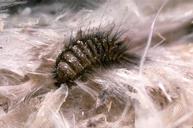Welcome to Carpet Beetle Control Well End

Carpet Beetle Control Well End offer the same day service for all Carpet Beetle problems throughout Well End. We also work weekends and have late evening appointments too so we can be at your property in no time.
Pest Control Hertfordshire do not believe in Call-Out charges, we will just quote you for the work we carry out, you will find our prices reasonable but we will offer you a professional service at all times.
All our Pest Controllers are fully trained and are extremely knowledgeable on all pests and they will advise you on the work that has been undertaken and also how to deter Carpet Beetles Problem from your property in the future.
We also cover both domestic and commercial properties in all Well End areas.
For any pest problem give Pest Control Hertfordshire a call our helpful team a call today.
Call us Carpet Beetle Experts Team at Pest Control Hertfordshire Today On: 07852 111437
About Carpet Beetles
The Beetles are fairly small, measuring 1.5 to 4mm in length. The body is strongly convex, rather like the ladybird beetle and is characterised by the pattern of yellow, black and whitish scales on the body.
Between 20 and 100 eggs are laid by the female during spring and early summer on furs, woollens and any dried materials of animal origin.
When the larvae hatch out, they are hairy and brown with three bunches of golden hairs on the abdomen. They normally reach a length of 4-5mm. They tend to avoid the light and, when disturbed, curl up into a ball.
The eggs hatch between 10 to 35 days depending on the temperature. The larvae can last at least a year depending on the quality of the food supply. The adult beetle lives from 7-41 days.
The adults appear in April, May and June and their resulting larvae hibernate during the following winter pupating during the latter part of February and March.
On emergence the adult beetles seek the light so they usually fly to the windows. They fly to light coloured flowers where they feed on nectar and pollen. After mating, the females enter houses during late summer and autumn and lay their eggs in birds’ nests in roof voids and other suitable places. The larvae feed on feathers and wool soiled with excrement.


















